I played One Night Werewolf by Bezier Games with my project 1 team in person. We played with four players, but the game is for 3-10 players, geared toward ages 8+, and takes about 10 minutes per round. The game can be played by a wide audience given that the rules are relatively simple. Moreover, there is a mobile app that leads the game as the host. I thought this was a nice modification to the original werewolf game, so there is no need for a moderator and everyone can play.
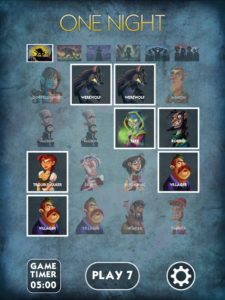
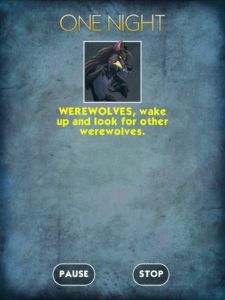
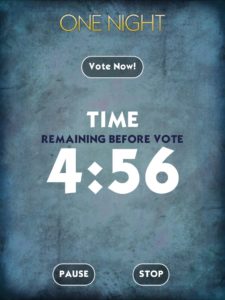
The objective of the game for the non-werewolves is to vote out at least one werewolf, and the objective of the werewolves is to not be voted out, so this can be defined as a “team competition” game. The game consists of one night where players of different roles perform different actions. For example, the troublemaker (which was the role I received) can swap two players’ roles but the players would not know their new roles. The seer can look at one player’s role. And the robber can swap their role with someone else’s. This makes the game very interesting because people’s objective could change during the round. After one night, everyone wakes up to negotiate and/or bluff in order to decide on who to vote out. Since the game only consists of one night, it is extremely fast-paced and short. Yet, each round remains fun as people take on different roles and strategies for bluffing.
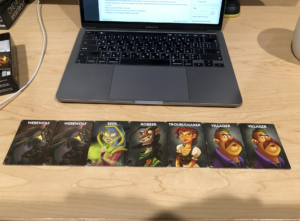
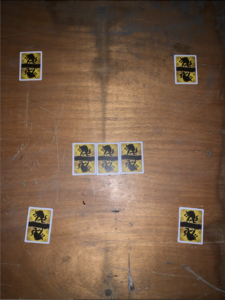
Another notable aspect of the game is the amount of information available to each player, and circles of information that exist. For example, in the first round that we played, three of the people knew each other’s roles because one was the seer and one was the troublemaker, but we had no information on the last person who claimed to be the werewolf. Then, it becomes a game of probability because there are two werewolf cards, of which both could be in the center (unused) or one could be in the player’s hand. The player claimed to be a villager and we trusted her, but she turned out to be the werewolf!
We also discovered that the order in which people decide to share their roles in the deliberation stage is also important because the people who share their role first have a higher chance of being called bluff (if someone else has the role). Therefore, the people who shared their role first tend to be more credible. This was an important dynamic in the game as the good guys would want to share their role first, but the werewolf could also take the gamble and call out a role that they think no one has.
One issue that we ran into was the case of a tie where two players vote for one person, and two other players vote for another. This happened when we had two werewolves in play. The instructions did not explain how to break ties, so one change I would make is that if half or more than half of the players vote out a werewolf, then the villagers win so that two werewolves can’t always tie up a game.
Overall, One Night Werewolf is a fun and engaging game for people of all ages, and it contains nuances in the game play and individual strategy that make every round new and exciting!


